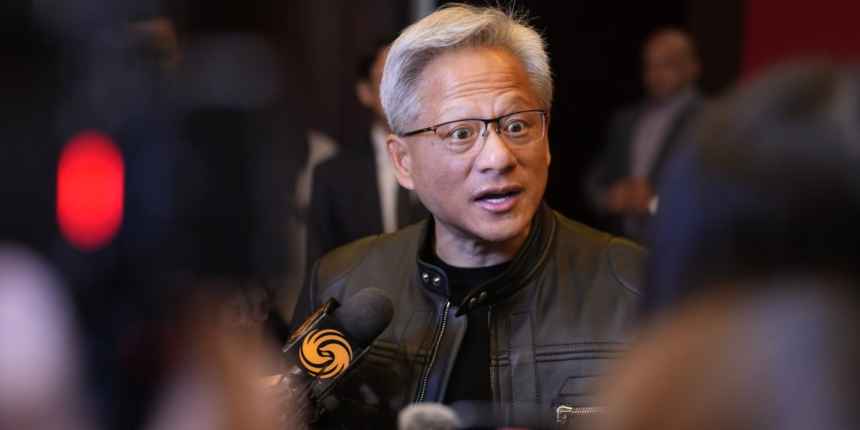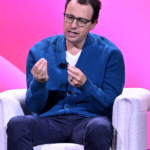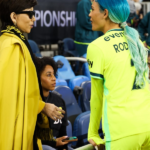A top Wall Street analyst has sounded an alarm over the U.S. equity bull market, warning that its remarkable run is built on a precariously narrow foundation: a surge in spending on, and optimistic assumptions about, infrastructure for artificial intelligence (AI). This spending has fueled a boom in the shares of most of the so-called Magnificent 7 and a few dozen related businesses, which have now come to account for roughly 75% of the S&P 500’s returns since the rally of the last few years began.
In an interview with Fortune, Shalett said she was “very concerned” about this theme in markets, saying her office had broadened from a belief that the market would only bid up seven or 10 stocks to roughly 40. “At the end of the day … this is not going to be pretty” if and when the generative AI capital expenditure story falters, she said.
When reached for comment, a spokesperson for Nvidia said, “We do not require any of the companies we invest in to use Nvidia technology.”
“Every morning the opening screen on my Bloomberg is what’s going on with CDS spreads on Oracle debt,” Shalett said, referring to credit default swaps, the financial instrument that was obscure before the Great Financial Crisis, but infamous for the role it played in a global market meltdown. CDSs essentially serve as insurance to investors in case of insolvency by a market entity. “If people start getting worried about Oracle’s ability to pay,” Shalett said, “that’s gonna be an early indication to us that people are getting nervous.” She added that all the indications to her speak of the end of a cycle and history is littered with cautionary tales from such times.
Oracle did not respond to requests for comment.
The so-called “hyperscaler” companies alone are now spending close to $400 billion annually on capex supporting AI infrastructure, Morgan Stanley Wealth Management calculated. The economic influence of AI capex is now immense, contributing an estimated 100 basis points—fully one percentage point—to second-quarter GDP growth, according to Morgan Stanley’s research. This pace outstrips the rate of underlying consumer spending growth by tenfold, underscoring its centrality to both market performance and broader economic data.
“People conflate AI adoption, which is in the first inning, with the capex infrastructure buildout, which has been going full-out since 2022,” Shalett told Fortune. She cited concerns about the prominence of private equity and debt capital coming into play, as that “tends to produce bubbles, because it may be unspoken-for capacity.” In other words, people have money to burn and they’re throwing it at things that may not pay off.
Shalett waved away macro theories about the labor market or the Federal Reserve. “We think that’s missing the forest for the trees because the forest is entirely rooted in this one story” about AI infrastructure. Morgan Stanley’s bull-case mid-2026 price target for the S&P 500 is an eye-popping 7,200, but Shalett highlights that even the most optimistic outlook admits that risk premiums, credit spreads, and market volatility do not seem to fully account for the vulnerabilities lurking beneath the AI-fueled advance.
Shalett’s analysis suggests that AI capex maturity is approaching and some possible slowdowns are already visible. For instance, hyperscalers have already seen free-cash-flow growth turn negative, a sign that investment may have outpaced underlying technology returns. Strategas, an independent research firm, estimates that hyperscaler free cash flow is set to shrink by more than 16% over the next 12 months, putting pressure on lofty valuations and forcing investors to demand more discipline in how these funds are deployed.
In an interview with Fortune, Arya explained why he wasn’t worried despite the “optics” being pretty obviously bad. “It’s very easy to say, ‘Oh, Nvidia is giving [OpenAI] money and they are buying chips with that money” and so on, but he argued the headlines are misleading about how much money is actually being spent and the $100 billion sticker price on the OpenAI deal “scared everyone.” Noting that the deal has multiple tranches that will play out over several years to come, he said it’s not like Nvidia is “just handing a $100 billion check to OpenAI [and saying] you know, go have fun.”
“Nvidia didn’t fund all of it,” Arya said of the wider generative AI capex boom. Citing public filings, Arya argued that Nvidia’s entire investment in the AI ecosystem is in fact less than $8 billion or so over the last 12 months, not such a large figure after all. And he’s still bullish on Nvidia and OpenAI, he added, because he sees them as the winners of this particular story. “We think they are going to be among the four or five ecosystems that come up. It’s not like Nvidia is going and investing in every one of those ecosystems, right? They’re only investing in one of those five, which is, of course, the most disruptive,” that being OpenAI.
When asked about his own fears of a bubble, Arya actually sounded a calmer but strikingly similar tune to Shalett. “I’m extremely comfortable with what will happen in the next 12 months,” Arya said, “And I have high sense of optimism about what will happen in the next five years. But can there be periods of digestion in between? Yeah.” Explaining that this is the nature of any infrastructure cycle, “it’s not always up and to the right.” In other words, after the next nine months in Shalett’s opinion and the next year in Arya’s, the data-center buildout endgame could be in play. “When these data centers are built,” Arya said, “they are not built for today’s demand. They’re built with some anticipation of demand that will develop in the next, you know, 12 to 18 months. So, are they going to be 100% utilized all the time? No.”
Bezos characterized it as “kind of an industrial bubble,” arguing that the infrastructure would pay off for many years to come.
When asked whether the size of this potential bubble represents uncharted waters for the economy, especially considering the one-note nature of the long bull market, Shalett said Wall Streeters are always evaluating risk. But putting on her “American citizen hat,” she warned about the media consolidation that sees Oracle’s founder Larry Ellison also now playing a major role in TikTok (as part of a buying consortium of Trump-friendly billionaires) and Paramount in Hollywood and CBS News in New York (through his son, David Ellison, the media company’s new owner). Shalett said she’s worried about “groupthink” filtering into the functioning of markets. “That is not something that most of us have experienced in our lifetimes,” she said. “You stop factoring in risk premiums into markets, there is no bear case to anything.”









